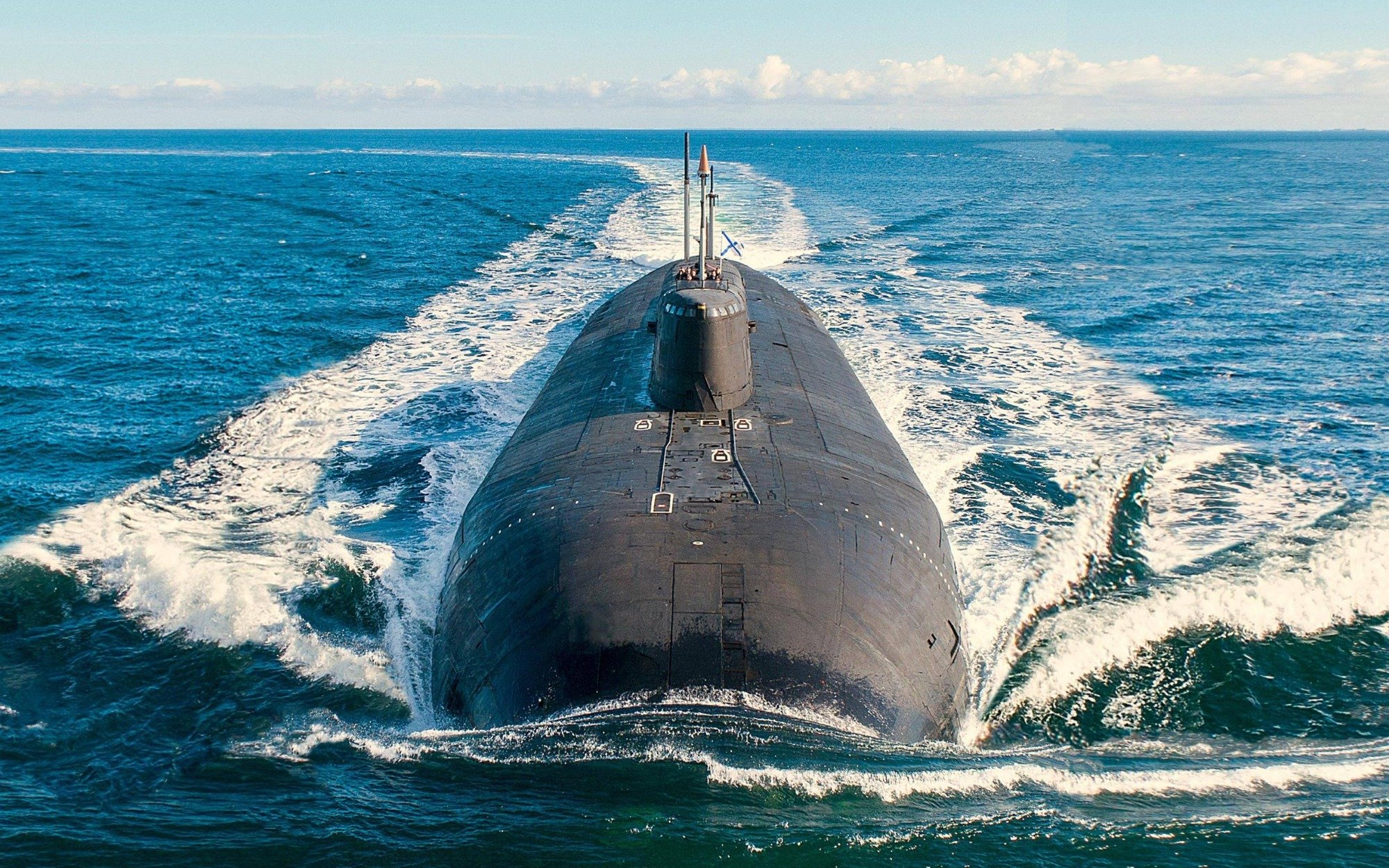Russia’s enormous nuclear submarine, the ‘Belgorod’ that recently became operational, is about to undertake the first-ever test of Russia’s Poseidon nuclear torpedoes, according to a top-secret NATO report cited by an Italian media outlet.
Chinese Military Aircraft Violated Korea’s Air Defense Zone Over 70 Times Last Year, Defense Ministry Reveals
The largest submarine built in 40 years, second only to the illustrious Typhoon class, the 14,700-ton nuclear-powered Belgorod submarine was inducted by the Russian Navy in July. At the time, it was not revealed where the gigantic underwater vessel would be deployed.
Going by the latest reports, Belgorod is set to undertake its first mission in the Arctic Ocean, which involves the first-ever test of Russia’s ‘game-changing’ super weapon, the Poseidon Unmanned underwater vehicle (UUV).
An Italian daily newspaper reported on September 28 that a secret intelligence report recently prepared by NATO raised concerns about Belgorod’s deployment in Arctic seas, possibly to test the Poseidon UUV for the first time.
“The alarm stems from a NATO intelligence report, sent to the most important allied commands in recent days. The report concerns the movements of the Belgorod nuclear submarine, which became operational in July. Now she’s back to dive in the Arctic seas, and it is feared that her mission is to test for the first time the super-torpedo Poseidon, often referred to as ‘the weapon of the Apocalypse,” reported la Repubblica.
The Belgorod Special-Purpose Submarine
Belgorod is an expansive, customized special-purpose submarine constructed from the hull of an Oscar-II cruise missile submarine that was never completed.
The submarine’s hull is around 184 meters (604 feet) long, and the ship’s displacement is up to 30,000 tons (when submerged). It is impossible to replicate the submarine because of its unique building history and exorbitant costs.

According to an article by HI Sutton, a prominent American expert on naval warfare, Belgorod will be manned by the Russian Navy sailors but run by GUGI, the secretive Main Directorate Deep Sea Research organization.
Sutton also notes in his article that the submarine has probably undergone extensive modifications and may include some modern technology. Regardless, it remains an earlier generation of submarines and is likely to be less stealthy than the latest generation.
The submarine is said to have a speed of about 60 kilometers per hour and can reportedly remain underwater for an estimated 120 days without returning to the surface. Its propellers are said to have been designed to escape sonar.
The Belgorod is designed for two roles: the first is to act as a host submarine or a ‘mothership’ to the small, nuclear-powered submarines that can dive deeply, and the second is as a nuclear strike and deterrence vessel, as per the analysis by Sutton.
To carry out a nuclear strike, Belgorod will carry six nuclear-tipped Poseidon UUVs.
Poseidon Underwater Unmanned Vehicle (UUV)
The Poseidon UUV is one of Russia’s six strategic weapons, also known as ‘Super Weapons,’ that Russian President Vladimir Putin unveiled during a speech in 2018 at the Manezh Central Exhibition Hall near the Kremlin.
Other super weapons include the Sarmat Inter-continental Ballistic Missile (ICBM), Avangard Hypersonic Glide Vehicle (HGV), the Burevestnik cruise missile, the Kinzhal air-launched hypersonic missile, and the Tsirkon ship-launched hypersonic missile.

Of these, Poseidon is perhaps the biggest game-changing super-weapon in the Russian arsenal, as it stands to add another dimension to nuclear deterrence. It is an ‘Intercontinental Nuclear-Powered Nuclear-Armed Autonomous Torpedo.’
The weapon’s speed is expected to be around 70 knots – faster than existing torpedoes – and according to some reports, maybe even 108 knots, making it uncatchable. Its operating depth is about 1,000 meters (3,300 feet), thus making it elusive as well.
Powered by a nuclear reactor, the Poseidon UUV has an unlimited range of operational flexibility in terms of launch and target locations. It can also be launched from under the ice caps.
Poseidon: Ingenious Method Of Nuclear Deterrence
The Poseidon represents a very ingenious method of nuclear deterrence envisioned by Russian military planners.
Russians have long wanted to circumvent the American ballistic missile defense systems deployed in Europe, creating a strategic imbalance against Russia. So, the option to deploy nuclear weapons underwater enables the Russian military to evade a US Ballistic Missile Defense (BMD) screening.
The Poseidon is also said to be capable of performing “three-dimensional” evasive maneuvers to increase its longevity.
Moreover, the US has a network of satellites equipped with infrared sensors to detect and track Russian intercontinental ballistic missiles. In the air, the ignition of the missile engine generates extreme heat, creating a temperature difference against the cold background for the satellites overhead to pick up.
Instead, satellites can’t see what happens in the depths of the sea. Besides, the Poseidon is reportedly designed to emit very little heat and travel silently.
Armed with a two-megaton nuclear warhead, the Poseidon can destroy aircraft carrier strike groups (CSG) and enemy infrastructural facilities in coastal regions.
It will most likely serve in the Pacific Fleet, threatening US naval bases on the West Coast and key cities like Los Angeles. Russia intends to deploy just over 30 Poseidon UUVs.
- Contact the author at tanmaykadam700@gmail.com
- Follow EurAsian Times on Google News




